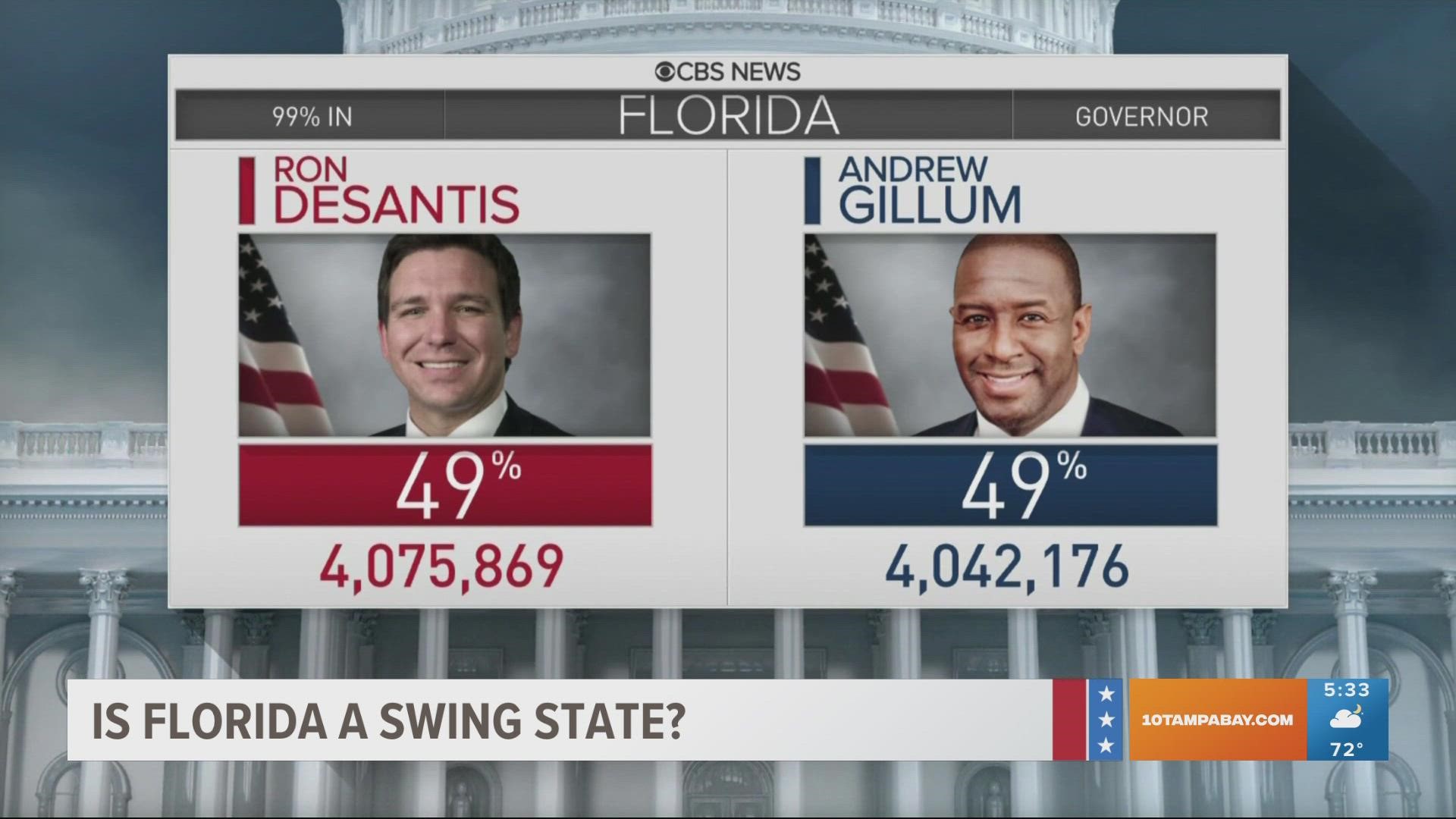ST. PETERSBURG, Fla. — In a sea of red and blue states, Florida has historically been — purple. A state where statewide elections could go either way and voters can make or break presidential campaigns. We all remember 2000, right?
But does Florida still hold its heralded swing state status? As the country seemingly becomes more polarized, years of data show Florida may be shifting away from its place in the middle. Depending on what happens with Tuesday’s midterm election, it may make things clearer.
Republican Governor Ron DeSantis will head into Election Day leading his Democratic challenger Charlie Crist by double digits in most polls.
Four years ago in 2018, projections were much closer. Gov. DeSantis won his first term by just 30,000 votes over Democrat Andrew Gillum in 2018 — and even in a year that saw big Democratic gains across the nation, just one Democrat was elected statewide in Florida.
In 2020, Former President Donald Trump was overwhelmingly defeated by then-Democratic nominee Joe Biden but won Florida by more than 3 points.
"Over the last two elections, we've seen Florida shift a little bit more to a light red state,” says 10 Tampa Bay Political Analyst Dr. Lars Hafner.
In just a few years, Republicans have flipped voter registration numbers. In 2018 there were 257 thousand more Democratic voters in the state, now there are 292 thousand more Republican voters.
Those additions propelled by a larger number of Latino and Hispanic voters voting Republican and the hundreds of people who move to the state every day--many came seeking less restrictions amid the height of the COVID pandemic.
"I actually just moved from Hawaii to here, I support our current governor and I definitely voted for him,” Jenny Espina, a new Floridian who voted early in Hillsborough County, said.
"Just the way Hawaii is run, I don't care how it's run and I like the way it's run here and I’m happy to be here," Espina added.
“We have a big Halloween display at our house and there is a gravestone there that says ‘Florida's status as a swing state. It's pretty much dead now,” says Peter Schorsch a former political operative, now publisher of Florida Politics.
"National donors, national operatives are not going to be investing here, it’s pretty telling Joe Biden has only been here twice to campaign."
The Florida Democratic Party sees things differently telling 10 Tampa Bay in a statement in part, “Florida is a perennial swing state, it's always going to be close. DeSantis squeaked by with a small margin in 2018 that went to a recount."
Regardless, Tuesday's results may shine a light on the truth behind the numbers.
"I think that if the races are at least five percentage points apart or greater, you would see the trend going towards the party that wins by those percentage points,” Hafner said.
Though Hafner says right now, it's the independents in the state, or the “No Party Affiliation” voters that can still have the biggest impact on the election.
"Florida is a state that's divided in thirds. How those no-party affiliations break is how the state will break. And that's why we're still perceived as a purple state,” Hafner explained.
As of Sunday morning, through early voting and vote-by-mail, more than 4.5 million Floridians cast ballots. Republicans — 1,999,376 — have outpaced Democratic voters — 1,662,182 — thus far, and more than 830,000 Independents have cast ballots.

